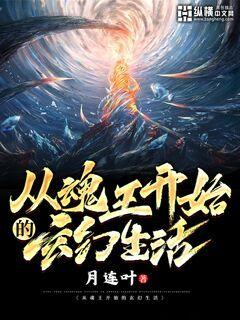
文章摘要的内容:
范云龙,作为一名年轻且充满潜力的足球运动员,他的职业生涯不仅是青春与成长的见证,更是奋斗与坚持的象征。本文将从他的足球起步、成长历程、职业发展以及影响力四个方面深入探讨,揭示出他如何在挑战与机遇中逐步成长为今日备受瞩目的球员。
---
范云龙从小便展现出对足球的热爱与天赋。在家乡的街头小巷,他与同伴们一同踢球,这种初生的热情为他日后的职业生涯奠定了坚实基础。进入足球学校后,他通过努力训练,逐渐展现出了技术和领导力,成为队伍中不可或缺的一员。
青少年时期,范云龙的足球梦想如何在家庭和学业之间平衡,成为他成长过程中的重要考验。家人的支持与教练的指导,成为他不断进步的动力源泉。
初涉足球界的他,面对比赛中的挑战和竞争,逐渐锤炼出了坚韧和毅力。这段成长经历不仅深刻影响了他的技术水平,也塑造了他的心态和态度。
进入职业俱乐部后,范云龙面对更为严峻的竞争和高强度的训练。他在这个新的环境中,通过不懈的努力和不断的学习,逐步适应了职业足球的节奏与要求。
在比赛中的表现逐渐为人们所瞩目,他的技术和战术意识得到了提升。团队合作的重要性在他的职业生涯中愈加凸显,他学会了如何与队友们携手并肩,共同追求胜利。
作为一个年轻球员,他不断接受挑战,尝试新的角色和位置,这些经历不仅拓展了他的技能范围,也增强了他的自信心和责任感。
范云龙逐渐成长为球队中的关键人物,他的表现不仅受到教练组的赏识,也赢得了球迷们的喜爱。在职业联赛中,他展现出了出色的进攻和防守能力,成为球队不可或缺的一环。
随着职业生涯的深入,他参与了多场重要比赛,每一次的经历都在他的成长路上留下了宝贵的痕迹。面对压力和挑战,他不断自我调整,不断进步,为自己的梦想不懈追求。
职业生涯中的荣誉和成就,如何激励他继续前行,成为他思考的重要话题。他在成长中学会了如何处理成功与失败,如何在困境中找到突破口。
作为一名公众人物,范云龙的言行举止对年轻球迷们具有重要的示范作用。他通过公益活动和慈善事业,回馈社会,引导更多年轻人积极投身于体育和公益事业。
范云龙的成功故事不仅仅是个人的成就,更是激励无数青少年追求自己梦想的动力源泉。他的青春与成长足迹,成为了许多年轻人学习和效仿的榜样。
他在球场上的风采和场下的坚持,构成了他影响力的核心。他的成就不仅在于比赛中的胜利,更在于如何通过自己的努力和行动,影响和改变周围的人们。
总结:
范云龙的足球旅程不仅是一段个人成长的历程,更是青春奋斗和坚持不懈的象征。通过他的足迹,我们看到了梦想如何在努力中成真,如何在挑战中磨砺自己,他的故事激励着每一个追求梦想的人。
范云龙不仅是一名优秀的球员,更是一个值得敬佩和学习的典范,他的成长经历将继续影响和激励着更多的人们,为足球事业注入新的活力与希望。
Certainly! Here's the structured article on "Optimizing Training Performance through Nutrition and Diet for Professional Athletes":
**Abstract:**
Professional athletes rely heavily on nutrition and diet to enhance their training performance. This article explores key factors that optimize their performance through dietary strategies. It examines the role of macronutrients, micronutrients, hydration, and timing of meals in maximizing athletic potential. By understanding and implementing these factors, athletes can achieve peak performance and maintain optimal health.
---
**1、Macronutrients:**
Macronutrients play a fundamental role in the diet of professional athletes, influencing energy levels, muscle recovery, and overall performance.
Athletes typically require a balanced intake of carbohydrates, proteins, and fats to meet their energy demands and support muscle repair.
Carbohydrates serve as a primary fuel source, especially during high-intensity activities, emphasizing the importance of adequate intake and timing to sustain performance.
Proteins are essential for muscle repair and growth, with athletes needing slightly higher amounts to recover effectively from training sessions.
Timing protein consumption around workouts is crucial for maximizing muscle synthesis and adaptation to exercise-induced stress.
A variety of protein sources, including lean meats, dairy, and plant-based options, offer athletes flexibility in meeting their nutritional needs.
Healthy fats contribute to sustained energy levels and support overall health in athletes, emphasizing sources like nuts, seeds, and fatty fish.
A balanced intake of omega-3 and omega-6 fatty acids aids in reducing inflammation and optimizing recovery post-training.
Adjusting fat intake based on training intensity and individual metabolic needs helps athletes maintain optimal body composition and performance.
Carbohydrates are critical for replenishing glycogen stores and providing quick energy during intense exercise sessions.
Choosing complex carbohydrates such as whole grains and vegetables ensures sustained energy release and supports prolonged athletic performance.
Strategic carb-loading before competitions or high-demand periods helps athletes maximize glycogen storage and enhance endurance.
---
**2、Micronutrients:**
Beyond macronutrients, micronutrients are essential for maintaining overall health, supporting immune function, and optimizing athletic performance.
Athletes require adequate intake of vitamins and minerals to support physiological processes, including bone health, oxygen transport, and muscle contraction.
Key micronutrients such as iron, calcium, vitamin D, and antioxidants play crucial roles in reducing the risk of injury and illness among athletes.
Iron is vital for oxygen transport and energy production, particularly significant for endurance athletes to prevent fatigue and optimize performance.
Calcium supports bone health and muscle function, essential for maintaining skeletal integrity and reducing the risk of stress fractures.
Ensuring sufficient intake of these minerals through diet and, if necessary, supplementation helps athletes meet their unique nutritional demands.
Vitamins such as vitamin D, C, and E contribute to immune function and recovery, aiding in the repair of muscle tissue and reducing oxidative stress.
Antioxidants from fruits, vegetables, and nuts help mitigate exercise-induced inflammation and support cellular repair processes post-exercise.
Strategies to incorporate a diverse range of micronutrient-rich foods into an athlete’s diet promote overall health and optimize training adaptations.
Hydration is critical for maintaining performance and preventing dehydration-related complications during training and competition.
Athletes should monitor fluid intake to replace losses through sweat, adjusting consumption based on environmental conditions and individual sweat rates.
Optimal hydration supports thermoregulation, nutrient transport, and cognitive function, enhancing overall athletic performance and recovery.
---
**3、Timing of Meals:**
The timing of meals and nutrient intake around training sessions is crucial for optimizing energy availability, promoting recovery, and supporting adaptation to exercise stress.
Strategic meal timing helps athletes maximize glycogen storage, enhance muscle protein synthesis, and minimize muscle breakdown.
Pre-exercise nutrition focuses on providing adequate carbohydrates for fuel and minimizing gastrointestinal distress during workouts.
Consuming a balanced meal or snack containing carbohydrates and a moderate amount of protein 2-4 hours before exercise provides sustained energy and supports muscle function.
Hydration before exercise ensures adequate fluid balance and enhances thermoregulation during physical exertion, optimizing performance and reducing the risk of dehydration.
Immediately following exercise, consuming a combination of carbohydrates and proteins within the first 30 minutes to 2 hours supports glycogen replenishment and muscle repair.
Timing protein intake post-exercise stimulates muscle protein synthesis, facilitating recovery and adaptation to training-induced stress.
Incorporating micronutrients and fluids into post-exercise meals aids in rehydration, replenishment of electrolytes, and overall recovery.
Strategically timing meals and snacks throughout the day maintains stable blood sugar levels and sustains energy for consistent training performance.
Adjusting nutrient intake based on training volume and intensity helps athletes meet their energy demands and achieve optimal nutrient timing for enhanced performance.
Individualized nutrition plans tailored to training schedules and performance goals optimize nutrient timing strategies, supporting long-term athletic success.
---
**4、Conclusion:**
Optimizing training performance through nutrition and diet involves a comprehensive approach focusing on macronutrients, micronutrients, hydration, and meal timing.
By understanding the role of each component and implementing evidence-based strategies, athletes can enhance performance, support recovery, and maintain overall health.
Continued research and personalized nutrition plans are essential to meet the unique needs of professional athletes and maximize their athletic potential.
Overall, integrating these key factors into a structured nutrition plan empowers athletes to achieve peak performance and excel in their respective sports.
小马丁:职业生涯的崛起与挑战
本文将探讨小马丁在职业生涯中所经历的崛起与挑战。从他的早期开始,到如何应对行业变革,再到他的领导风格与团队协作方式,最后总结他职业生涯的关键成功因素。
小马丁在行业中的初涉如何影响他后续的发展?他是如何通过学习与实践积累起宝贵的经验?在最初的职业生涯中,他面对了哪些最大的挑战?
随着时间的推移,他如何从这些挑战中汲取教训,逐步发展出自己的职业道路?这一阶段的成长对他未来的影响有何重要意义?
在他职业生涯的早期,他是如何平衡学习和应用,以及如何通过挑战和失败不断成长?
随着行业技术与市场的快速变化,小马丁是如何调整自己的职业路径?他是如何在不断变化的行业环境中保持竞争力?
他采取了哪些策略和方法来应对行业变革的挑战?这些策略如何帮助他在职业生涯中保持稳定与成长?
他在这一过程中面对的最大挑战是什么?他是如何通过创新和适应性来克服这些挑战的?
作为领导者,小马丁的领导风格是怎样影响他的职业生涯的关键因素?他是如何建立和培养团队的协作精神?
他在团队管理中面对的主要挑战是什么?他是如何通过领导力和沟通技巧来解决这些挑战的?
他的领导风格如何与他的职业发展路径相互作用?他的团队管理方式如何帮助他在职业生涯中取得成功?
综合小马丁职业生涯中的崛起与挑战,有哪些关键成功因素是他职业生涯中的转折点?
他是如何通过经验总结和持续学习来不断提升自己?这些因素如何影响他的决策和职业道路?
最终,小马丁在职业生涯中的成功背后,有哪些深刻的教训和启示?这些教训对其他职业人士有何借鉴意义?
总结:
小马丁通过早期起步的艰难经历和对行业变革的灵活应对,建立了独特的领导风格和团队协作方式。关键成功因素在于他的坚韧、学习能力和适应性。他的职业生涯不仅是个人成就的体现,也是职业发展道路上的一个典范。
迪拜足球风云:球员的辉煌与挑战
迪拜,这座闪耀的沙漠城市,不仅以其壮丽的建筑和奢华的生活方式闻名于世,足球运动也在这里绽放出独特的光彩。本文将深入探讨迪拜足球的辉煌历史和面临的挑战,从多个角度揭示这个城市足球的独特风貌。
迪拜足球的历史可以追溯到几十年前的初期发展阶段。起初,这座城市的足球运动主要由当地人和外国移民组成的社区球队所主导。随着时间的推移,越来越多的专业俱乐部涌现,它们成为了培养本地球员和吸引国际球星的重要平台。
在这个过程中,迪拜的足球传承逐渐形成,技术水平和战术理念也得到了不断的提升。这种传承不仅仅是球技的传递,更是文化与社会的交融,塑造了今天迪拜足球的独特特色。
随着迪拜在全球经济和文化中的崛起,足球成为了这座城市国际化进程中不可或缺的一部分。
迪拜的财富和影响力对足球运动产生了深远的影响。富裕的俱乐部能够通过高额的转会费和高薪的合同吸引世界顶级球员,使得迪拜成为了全球足球转会市场的重要角色之一。
不仅如此,迪拜的投资也推动了基础设施建设和足球设施的现代化。现代化的训练中心和球场不仅提升了球员的训练体验,也吸引了更多国际比赛和赛事在这里举办。
然而,财富带来的挑战也是显而易见的,包括金钱对俱乐部管理的影响、球员的壮观薪酬和竞争过度等问题,这些都对迪拜足球的长远发展构成了挑战。
迪拜的多元文化背景和国际化特质,使得这里的足球社区充满了包容与创新。各种文化的交流不仅丰富了足球的技战术风格,也使得迪拜成为了国际球员愿意选择的一个足球生涯的理想地。
足球的国际化还带来了青训体系的创新和国际赛事的举办,促进了迪拜足球在全球范围内的影响力和知名度。
然而,多元化也带来了文化冲突和身份认同的挑战,如何在多元文化交融的环境中找到平衡点,成为迪拜足球发展中需要思考的问题。
展望未来,迪拜足球面临着新的挑战和机遇。随着全球足球格局的变化和技术的进步,迪拜需要在保持传统的同时,不断创新和适应新的发展趋势。
在可持续发展的背景下,如何平衡商业化和球员福利,如何在国际市场竞争中保持竞争力,将是迪拜足球未来发展的重要课题。
总体而言,迪拜足球在辉煌与挑战中前行,其发展不仅关乎本地足球的命运,更关乎全球足球运动的未来。
总结:
迪拜足球在全球舞台上展现了独特的魅力和影响力,虽然面临着诸多挑战,但其传承与创新的平衡将决定其未来发展的方向。
### 文章摘要
本文将深入探讨摩纳哥球员摩洛哥在足球界的独特身份,他作为跨国足球明星的经历和影响。从他的背景、职业生涯、国家认同感以及对足球世界的贡献四个方面展开,逐步揭示他在足球界的独特价值和影响力。
---
摩纳哥球员摩洛哥的出生背景及家庭情况。
他在足球生涯初期所面临的挑战和机遇。
如何在摩纳哥和摩洛哥之间找到自己的身份认同。
摩洛哥在不同俱乐部效力的经历和成就。
他在国际比赛中的表现如何影响了他的职业生涯。
面对困难时,他是如何保持信心和坚持的。
他在代表摩纳哥和摩洛哥国家队之间的选择与挑战。
如何平衡两国家的文化和足球传统。
他对自己国家认同感的演变和深化过程。
摩洛哥作为跨国球员对足球界的独特贡献。
他在社会和文化层面上的影响力及其可持续发展的足迹。
他如何影响了年轻球员和足球迷的观念与行为。
总结:
摩纳哥球员摩洛哥在足球界的独特身份,不仅体现在他的职业成就上,更在于他作为一个跨国足球明星如何在不同的文化和国家间找到平衡与认同。他的经历启示我们,足球不仅是比赛,更是连接世界各地人们情感和文化的纽带。
通过他的故事,我们看到了全球化时代足球的力量和影响,以及个体在其中的独特贡献。
文章摘要:深圳外籍球员中的日本选手,通过其职业生涯和影响,展示了在中国足球联赛中的独特地位和贡献。本文从他们的球技表现、文化交流、市场影响和未来展望四个方面进行详细探讨,揭示了他们如何在深圳俱乐部扮演重要角色,并对本地足球发展产生深远影响。
深圳外籍日本球员的职业生涯往往以何种方式开始?他们的球技在比赛中表现如何?通过这些表现,他们如何提升了深圳球队的整体水平?
这些球员在训练和比赛中所展现的技术特点是什么?他们在场上如何影响球队的战术安排和实际比赛结果?
他们的职业生涯在深圳足球发展中扮演了怎样的角色?他们与本地球员的互动如何促进了技术交流和进步?
作为外籍球员,他们如何适应深圳的生活和足球环境?文化差异对他们的职业生涯有何影响?
这些日本球员如何通过语言和文化的交流促进了与队友和教练组的融合?
他们在俱乐部中的角色如何体现了多元文化团队在现代足球中的重要性?
这些日本球员如何在深圳俱乐部的市场推广中扮演了重要角色?他们的知名度和影响力如何?
他们的到来是否增加了俱乐部的商业价值?他们如何通过个人形象和活动吸引了更多的球迷?
他们在社交媒体上的活跃度如何带动了俱乐部在国际市场上的曝光度?
这些日本球员的职业生涯结束后,他们的离开对深圳俱乐部和本地足球发展有何影响?
未来,深圳俱乐部是否会继续吸引日本球员?他们的经验如何影响俱乐部对外籍球员的招募策略?
他们的离去是否会影响到俱乐部的国际化趋势和竞技水平?
总结:
深圳外籍球员中的日本选手,通过其在职业生涯中的技术贡献、文化交流、市场影响和对未来发展的影响,不仅提升了俱乐部的竞技水平,也为中国足球联赛注入了新的文化和国际视野。他们的离去标志着一个时代的结束,但也为未来深圳俱乐部与日本足球之间的合作留下了宝贵的经验和深远的影响。
他们的故事,不仅是足球的一部分,更是文化交流和国际化发展的见证,为全球化时代的足球发展提供了重要的参考和启示。